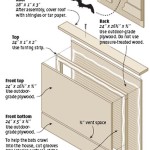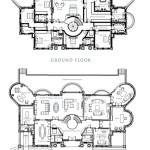House Plans With Open Floor Plans
An open floor plan is a home design where the main living areas, such as the kitchen, dining room, and living room, are not separated by walls or doors. This creates a more open and spacious feel, and allows for a better flow of traffic and natural light. Open floor plans are often used in modern homes, but they can be incorporated into any style of home. One example of an open floor plan is a great room, which is a large, open space that combines the living room, dining room, and kitchen into one area.
There are many advantages to having an open floor plan. One advantage is that it can make a home feel more spacious. This is especially beneficial in small homes, where every square foot counts. Open floor plans also allow for a better flow of traffic, as there are no walls or doors to block the way. This can make it easier to entertain guests, as well as to move around the house with ease. Additionally, open floor plans can help to improve natural light, as there are no walls to block the light from flowing throughout the space.
There are many important points to consider when designing a house plan with an open floor plan. Here are 9 important points to keep in mind:
- Define the space
- Create a focal point
- Use furniture to divide space
- Incorporate natural light
- Choose the right flooring
- Consider acoustics
- Think about privacy
- Consider traffic flow
- Get professional help
By following these tips, you can create an open floor plan that is both beautiful and functional.
Define the space
The first step in designing an open floor plan is to define the space. This means determining which areas of the home will be open to each other, and which areas will be closed off. For example, you may want to have an open kitchen, dining room, and living room, but you may want to have a separate bedroom and bathroom.
- Create a central gathering space
The central gathering space is the heart of the open floor plan. This is where people will come together to socialize, relax, and entertain. When defining the space for your central gathering space, be sure to consider the size of the space, the furniture you will need, and the traffic flow.
- Define the different areas
Once you have defined the central gathering space, you can start to define the different areas of your open floor plan. For example, you may want to have a kitchen area, a dining area, and a living area. When defining these different areas, be sure to consider the size of each area, the furniture you will need, and the traffic flow.
- Use furniture to divide space
Furniture can be used to divide space in an open floor plan. For example, you can use a sofa to divide the living area from the dining area. You can also use a bookshelf to divide the living area from the kitchen area. When using furniture to divide space, be sure to choose pieces that are the right size and style for the space.
- Consider traffic flow
Traffic flow is an important consideration when designing an open floor plan. You want to make sure that people can move around the space easily and without bumping into each other. When considering traffic flow, be sure to think about the placement of furniture, the size of the space, and the number of people who will be using the space.
By following these tips, you can define the space in your open floor plan and create a home that is both beautiful and functional.
Create a focal point
A focal point is a central point of interest in a room. It is something that draws the eye and makes a statement. In an open floor plan, the focal point can be anything from a fireplace to a piece of art to a large window.
There are many benefits to having a focal point in an open floor plan. First, it can help to define the space and make it feel more organized. Second, it can create a sense of balance and harmony. Third, it can add interest and character to the space.
When choosing a focal point for your open floor plan, there are a few things to keep in mind. First, consider the size of the space. A small space will need a smaller focal point, while a large space can handle a larger focal point. Second, consider the style of the space. A traditional space will need a traditional focal point, while a modern space can handle a more modern focal point. Third, consider the function of the space. If the space is used for entertaining, you may want to choose a focal point that is visually appealing. If the space is used for relaxing, you may want to choose a focal point that is more calming.
Here are a few ideas for focal points in an open floor plan:
- Fireplace: A fireplace is a classic focal point that can add warmth and ambiance to a space. If you have a fireplace in your open floor plan, be sure to make it the center of attention.
- Piece of art: A large piece of art can make a bold statement in an open floor plan. Choose a piece of art that reflects your personal style and that will add interest to the space.
- Large window: A large window can bring the outdoors in and create a sense of spaciousness. If you have a large window in your open floor plan, be sure to make it a focal point by framing it with curtains or drapes.
- Accent wall: An accent wall is a wall that is painted a different color or texture than the other walls in the space. An accent wall can add interest and drama to an open floor plan. Choose an accent wall that complements the other colors in the space.
By following these tips, you can create a focal point in your open floor plan that will add interest, character, and style to the space.
Use furniture to divide space
Furniture can be used to divide space in an open floor plan without the need for walls or partitions. This can be a great way to create different areas within a large space, such as a living area, dining area, and home office. When using furniture to divide space, it is important to choose pieces that are the right size and style for the space. You also want to make sure that the furniture is arranged in a way that allows for easy traffic flow.
- Sofas and chairs
Sofas and chairs are great for dividing space in an open floor plan. They can be used to create a cozy conversation area in the living room, or to define a dining area in the kitchen. When using sofas and chairs to divide space, be sure to choose pieces that are the right size for the space. You also want to make sure that the furniture is arranged in a way that allows for easy traffic flow.
- Bookshelves
Bookshelves are another great way to divide space in an open floor plan. They can be used to create a library area in the living room, or to divide the living room from the kitchen. When using bookshelves to divide space, be sure to choose pieces that are the right size for the space. You also want to make sure that the bookshelves are arranged in a way that allows for easy traffic flow.
- Screens and room dividers
Screens and room dividers are another option for dividing space in an open floor plan. They can be used to create a more private area in the bedroom, or to divide the living room from the dining room. When using screens and room dividers, be sure to choose pieces that are the right size for the space. You also want to make sure that the screens and room dividers are arranged in a way that allows for easy traffic flow.
- Curtains
Curtains can also be used to divide space in an open floor plan. They can be used to create a more private area in the bedroom, or to divide the living room from the dining room. When using curtains to divide space, be sure to choose curtains that are the right size for the space. You also want to make sure that the curtains are hung in a way that allows for easy traffic flow.
By following these tips, you can use furniture to divide space in your open floor plan and create a home that is both beautiful and functional.
Incorporate natural light
Natural light can make a home feel more spacious, inviting, and cheerful. It can also help to reduce energy costs by reducing the need for artificial lighting. In an open floor plan, there are many ways to incorporate natural light.
One way to incorporate natural light is to use large windows and doors. Windows and doors that are placed on opposite sides of a room can create a cross-breeze, which can help to circulate air and keep the room cool in the summer. Skylights are another great way to bring natural light into a space. Skylights can be placed in any room of the house, and they can provide a dramatic source of light.
In addition to using windows, doors, and skylights, there are other ways to incorporate natural light into an open floor plan. For example, you can use light-colored paint and finishes. Light-colored surfaces reflect light, which can make a space feel brighter and more spacious. You can also use mirrors to reflect light around a room. Mirrors can be placed on walls, ceilings, or even furniture.
By following these tips, you can incorporate natural light into your open floor plan and create a home that is both beautiful and functional.
Natural light can also have a positive impact on your health and well-being. Studies have shown that exposure to natural light can help to improve mood, boost energy levels, and reduce stress. Natural light can also help to regulate your circadian rhythm, which is your body’s natural sleep-wake cycle.
Choose the right flooring
The type of flooring you choose for your open floor plan can have a big impact on the overall look and feel of the space. There are many different flooring options to choose from, so it is important to do your research and choose a flooring that is both durable and stylish.
- Hardwood flooring
Hardwood flooring is a classic choice for open floor plans. It is durable, easy to clean, and can add a touch of elegance to any space. However, hardwood flooring can be expensive, and it is important to choose a hardwood that is appropriate for your climate and lifestyle.
- Laminate flooring
Laminate flooring is a more affordable alternative to hardwood flooring. It is made of a durable material that is resistant to scratches and stains. Laminate flooring is also easy to install and maintain. However, laminate flooring can be noisy and it is not as durable as hardwood flooring.
- Tile flooring
Tile flooring is a great choice for open floor plans because it is durable, easy to clean, and water-resistant. Tile flooring is available in a wide variety of colors and styles, so you can find a tile that matches the dcor of your home. However, tile flooring can be cold and hard underfoot.
- Carpet flooring
Carpet flooring can add a touch of warmth and comfort to an open floor plan. It is also a good choice for homes with children or pets. However, carpet flooring can be difficult to clean and it can show wear and tear more easily than other types of flooring.
When choosing flooring for your open floor plan, it is important to consider the following factors:
- Durability: Choose a flooring that is durable enough to withstand the wear and tear of everyday life.
- Style: Choose a flooring that matches the dcor of your home.
- Cost: Set a budget for your flooring and stick to it.
- Maintenance: Choose a flooring that is easy to clean and maintain.
Consider acoustics
Acoustics is the study of sound and how it travels. It is an important consideration for any space, but it is especially important for open floor plans. In an open floor plan, sound can travel easily from one room to another, which can make it difficult to have a conversation in one room without being overheard in another room. It can also make it difficult to concentrate on a task in one room if there is noise coming from another room.
There are a number of things you can do to improve the acoustics in your open floor plan. One thing you can do is to use soft furnishings. Soft furnishings, such as carpets, curtains, and upholstered furniture, can help to absorb sound and reduce noise levels. Another thing you can do is to use soundproofing materials. Soundproofing materials, such as acoustic panels and soundproofing curtains, can be used to block sound from traveling from one room to another.
In addition to using soft furnishings and soundproofing materials, there are other things you can do to improve the acoustics in your open floor plan. For example, you can avoid placing furniture directly in front of doorways. Placing furniture in front of doorways can block sound from traveling from one room to another. You can also avoid placing furniture too close together. Placing furniture too close together can create a sound barrier that can make it difficult to hear people who are talking in another room.
By following these tips, you can improve the acoustics in your open floor plan and create a more comfortable and enjoyable space.
Improving the acoustics in your open floor plan can also have a number of benefits for your health and well-being. Studies have shown that exposure to noise can lead to a number of health problems, including hearing loss, sleep problems, and stress. By improving the acoustics in your open floor plan, you can reduce your exposure to noise and improve your overall health and well-being.
Think about privacy
Privacy is an important consideration for any home, but it is especially important for open floor plans. In an open floor plan, there are fewer walls and doors to separate different areas of the home, which can make it difficult to find a private space to relax or work. However, there are a number of things you can do to improve privacy in an open floor plan.
- Use furniture to create separate areas
One way to improve privacy in an open floor plan is to use furniture to create separate areas. For example, you can use a sofa to divide the living room from the dining room, or you can use a bookshelf to divide the living room from the kitchen. When using furniture to create separate areas, be sure to choose pieces that are the right size and style for the space.
- Use curtains or screens to divide space
Another way to improve privacy in an open floor plan is to use curtains or screens to divide space. Curtains and screens can be used to create a more private area in the bedroom, or to divide the living room from the dining room. When using curtains or screens to divide space, be sure to choose pieces that are the right size and style for the space.
- Use frosted glass or window film
If you have large windows in your open floor plan, you can use frosted glass or window film to create a more private space. Frosted glass and window film can be used to obscure the view from outside, while still allowing light to enter the space.
- Consider the placement of your furniture
When placing furniture in an open floor plan, it is important to consider the placement of your furniture. Avoid placing furniture directly in front of doorways or windows, as this can block the flow of light and make it difficult to move around the space. Instead, try to place furniture in a way that creates a more open and inviting space.
By following these tips, you can improve privacy in your open floor plan and create a more comfortable and enjoyable space.
Consider traffic flow
Traffic flow is an important consideration for any home, but it is especially important for open floor plans. In an open floor plan, there are fewer walls and doors to separate different areas of the home, which can make it difficult to move around the space easily. However, there are a number of things you can do to improve traffic flow in an open floor plan.
One way to improve traffic flow in an open floor plan is to use furniture to define different areas of the space. For example, you can use a sofa to divide the living room from the dining room, or you can use a bookshelf to divide the living room from the kitchen. When using furniture to define different areas of the space, be sure to choose pieces that are the right size and style for the space.
Another way to improve traffic flow in an open floor plan is to avoid placing furniture in the middle of the space. Instead, try to place furniture along the walls or in corners. This will create a more open and inviting space that is easier to move around.
Finally, when placing furniture in an open floor plan, be sure to consider the placement of doors and windows. Avoid placing furniture in front of doorways or windows, as this can block the flow of light and make it difficult to move around the space. Instead, try to place furniture in a way that creates a more open and inviting space.
Get professional help
If you are considering building a house with an open floor plan, it is important to get professional help. A professional can help you design a plan that meets your specific needs and budget. A professional can also help you avoid common mistakes that can be made when designing an open floor plan.
- Experience and expertise
A professional has the experience and expertise to design an open floor plan that meets your specific needs and budget. A professional can also help you avoid common mistakes that can be made when designing an open floor plan. For example, a professional can help you determine the right size and layout for your open floor plan, and can help you choose the right materials and finishes.
- Code compliance
A professional can help you ensure that your open floor plan complies with all applicable building codes. Building codes are regulations that govern the construction of buildings. Building codes are in place to ensure that buildings are safe and structurally sound.
- Cost savings
A professional can help you save money on the construction of your open floor plan. A professional can help you choose the right materials and finishes, and can help you avoid costly mistakes. Additionally, a professional can help you negotiate with contractors to get the best possible price on your project.
- Peace of mind
Hiring a professional to design your open floor plan can give you peace of mind. You can be confident that your open floor plan will be designed and built to the highest standards. Additionally, you can be confident that your open floor plan will comply with all applicable building codes.
If you are considering building a house with an open floor plan, it is important to get professional help. A professional can help you design a plan that meets your specific needs and budget. A professional can also help you avoid common mistakes that can be made when designing an open floor plan.










Related Posts








